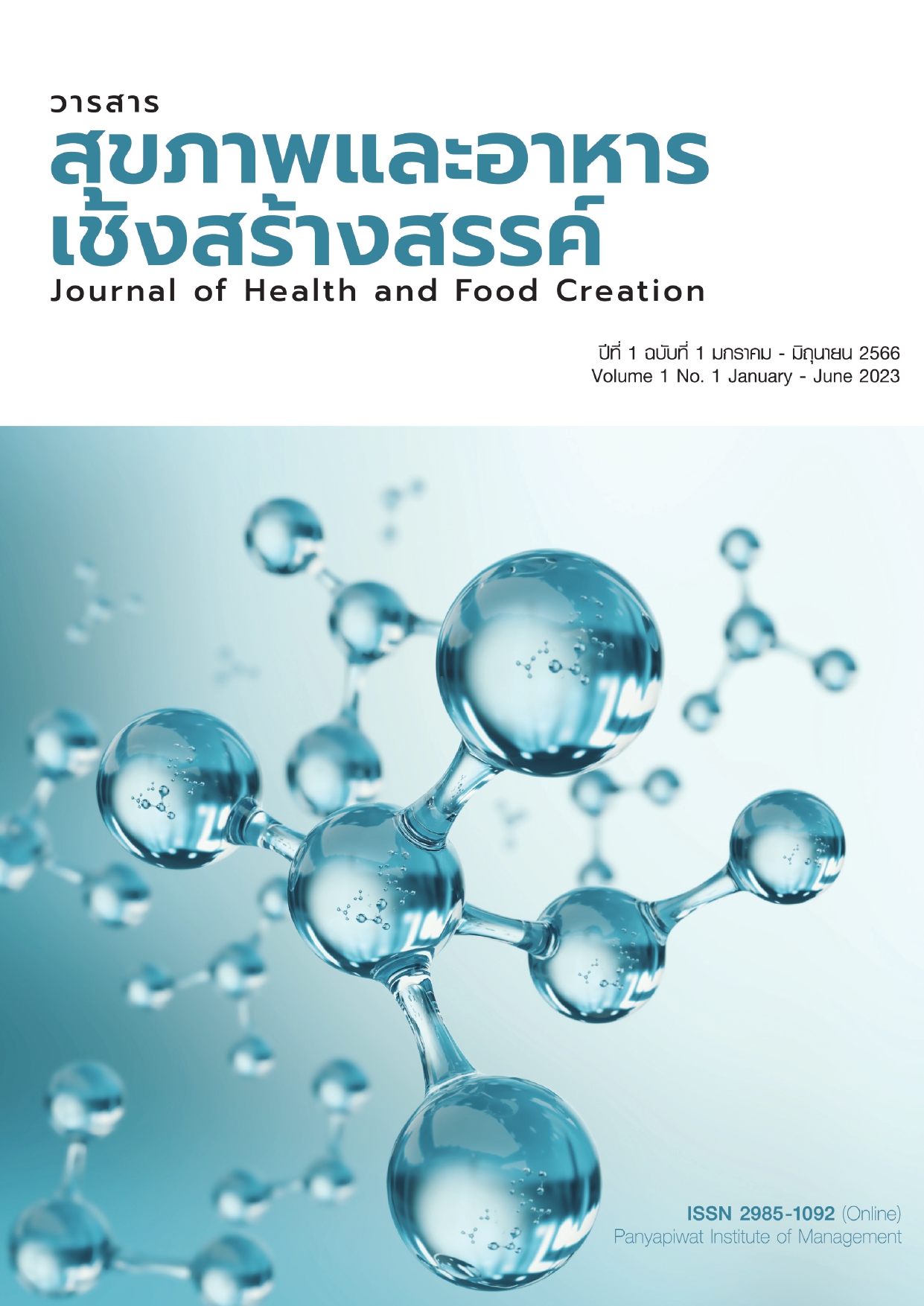ผู้สูงอายุในยุคดิจิทัล: ความท้าทายทางสุขภาพ
คำสำคัญ:
ผู้สูงอายุ, สุขภาพ, เทคโนโลยีดิจิทัล, ความท้าทายบทคัดย่อ
โครงสร้างประชากรโลกที่เปลี่ยนแปลงจากประชากรผู้เยาว์วัยมาสู่ผู้สูงอายุ นโยบายด้านสุขภาพได้คำนึงถึงความครอบคลุมการกระจายบริการสุขภาพอย่างทั่วถึงและเท่าเทียม ภายใต้สิทธิประโยชน์ด้านการดูแลรักษาโดยมุ่งเน้นการสร้างวิถีสุขภาพตั้งแต่แรกเกิดจนเป็นผู้สูงอายุ ประกอบกับปัจจุบันนโยบายรัฐบาลให้มีการนำเทคโนโลยีดิจิทัลมาใช้ในการบริหารงาน และยกระดับการให้บริการโดยยึดความต้องการของประชาชนเป็นศูนย์กลาง ด้วยเหตุนี้ เทคโนโลยีดิจิทัลจึงถูกนำมาเป็นเครื่องมือสำคัญในการขับเคลื่อนนโยบายดังกล่าวลงสู่การปฏิบัติอย่างเป็นรูปธรรมแก่กลุ่มเป้าหมายโดยเฉพาะกลุ่มผู้สูงอายุให้มีความรวดเร็วยิ่งขึ้น ดังตัวอย่างการแพร่ระบาดหนักของเชื้อโคโรนาไวรัส ได้มีการใช้มาตรการเว้นระยะห่างทางสังคมเพื่อป้องกันการแพร่กระจายเชื้อ ดังนั้น การเผยแพร่ข้อมูลข่าวสารทางสุขภาพและการดูแลรักษาโดยใช้เทคโนโลยีดิจิทัลจึงเป็นทางเลือกที่มีความสำคัญที่ถือเป็นความท้าทายทางสุขภาพทั้งต่อการดูแลสุขภาพผู้สูงอายุและเพื่อผู้สูงอายุดูแลสุขภาพตนเอง รวมถึงนโยบายการจัดระบบบริการสุขภาพของรัฐเพื่อสนับสนุนและตอบสนองการดูแลตนเองของผู้สูงอายุให้เป็นผลสำเร็จ
เอกสารอ้างอิง
Buyl, R., Beogo, I., Fobelets, M., Deletroz, C., Landuyt, P. V., Dequanter, S., Gorus, E., Bourbonnais, A., Giguère, A., Lechasseur, K., & Gagnon M. (2020). E-Health interventions for healthy aging: A systematic review. Systematic Reviews, 9(1), 128. https://doi.org/10.1186/s13643-020-01385-8
Carmen, M., & Mike, M. (2019). Aging in the digital era. Frontiers in Psychology, 10, 1815. https://www.frontiersin.org/articles/10.3389/fpsyg.2019.01815
Chaichuay, W. (2017). Elderlies’ experience in using LINE application: A phenomenological study. Veridian E-Journal, Silpakorn University, 10(1), 905-918. https://he02.tci-thaijo.org/index.php/Veridian-E-Journal/article/view/87705 [in Thai]
Digital Government Development Agency. (2021). Digital government development plan of Thailand B.E. 2563-2565 (Revised version the 4th/2563). https://www.dga.or.th/wpcontent/uploads/2022/02/Presentation-DGA-TRANSLATED-INTO-ENG-Vfinal.pdf [in Thai]
Electronic Transactions Development Agency. (2022). Thai guide Cyber go (Old edition). https://www.etda.or.th/th/Useful-Resource/เอกสารเผยแพร/ETDA-Digital-Citizen-ฉบบวยเกา.aspx [in Thai]
Institute for Population and Social Research. (2019). The reflection on Thai families to society. https://ipsr.mahidol.ac.th/en/post_research/ประชากรและสังคม-2562/ [in Thai]
Jariyachinda, P., & Titichoatrattana, W. (2018). Caregiver for elderly in 4.0 era. Journal of MCU Humanities Review, 4(2), 29-38. https://so03.tci-thaijo.org/index.php/human/article/download/165612/143229/637544 [in Thai]
Kardas, P. (2017). Europe opens a new era in digital revolution: The blueprint on digital transformation of health and care for aging society has been launched. Digital Medicine, 3(1), 6-10. http://www.digitmedicine.com/text.asp?2017/3/1/6/208448
Kaufman, D., Sauvé, L., Kaufman, D., Sauvè, L., & Ireland, A. (2020). Playful aging: Digital games for older adults. https://agewell-nce.ca/wp-content/uploads/2020/02/AGE-WELL_WP4.2_White-paper_GAMES.pdf
Kleechaya, P. (2021). Digital Technology utilization of elderly and framework for promoting Thai active and productive aging. Journal of Communication Arts, 39(2), 56-78. [in Thai]
Kleechaya, P. (2022). Looking at a new angle of aging “Active Aging”, how is it still old? Provide opportunities in the digital world. https://www.bangkokbiznews.com/health/publichealth/1029507 [in Thai]
Loock, K. (2021). On the realist aesthetics of digital de-aging in contemporary Hollywood cinema. Orbis Litterarum, 76, 214-225. https://doi.org/10.1111/oli.12302
Moret-Tatay, C., & Murphy, M. (2019). Editorial: Aging in the digital era. Frontiers in Psychology, 10(2019), 1815. http://doi.org/10.3389/fpsyg.2019.01815
Natho, P., Boonmee, S., & Boonying, S. (2021). Cataract detection using machine learning and neural network. Journal of Applied Information Technology, 7(2), 51-61. [in Thai]
National Health Security Office (NHSO). (2022). NHSO expands telemedicine service by introducing “Clinic App” to take care of more COVID patients, 27 July 2022. https://www.nhso.go.th/news/3690 [in Thai]
National Institute for Emergency Medicine. (2019). Application EMS 1669. https://www.niems.go.th/1/SubWebsite/?id=1055 [in Thai]
National Statistical Office. (2015). Analytical report on factors affecting internet use for the elderly in Thailand 2014. Text and Journal Publication.
NEC. (2023). Thailand successfully tests feasibility of elderly care solution prepare to enter completely aged society. https://th.nec.com/en_TH/press/PR/20221116113551_13538.html [in Thai]
Office of the National Economic and Social Development Council. (2019). A study report on the impact of population structure changes and policy recommendations on national development from the results of population projections of Thailand. Office of the National Economic and Social Development Council. [in Thai]
Phanmool, J., & Propunprom, P. (2021). Situation of media access, fake news recognition and the impacts of media use of the elderly in urban communities in a new normal. Journal of Legal Entity Management and Local Innovation, 7(8), 171-184. https://so04.tci-thaijo.org/index.php/jsa-journal/article/download/251254/172070/909790
Phengsrakate, P. (2019). Production of space for the productive ageing’s economic and social benefits. Journal of Humanities and Social Sciences, 13(1), 154-164. https://so03.tci-thaijo.org/index.php/trujournal/article/view/166661
Schreurs, K., Quan-Haase, A., & Martin, K. (2017). Problematizing the digital literacy paradox in the context of older adults’ ICT use: Aging, media discourse, and self-determination. Canadian Journal of Communication, 42(2), 359-377. https://doi.org/10.22230/cjc.2017v42n2a3130
Sen, K., Prybutok, G., & Prybutok V. (2022). The use of digital technology for social wellbeing reduces social isolation in older adults: A systematic review. https://doi.org/10.1016/j.ssmph.2021.101020
Siritarungsri, B., Soranastapom, S., Malee, S., Francis, K., & Mills, J. (2015). Strategies for successful ageing living alone. Journalism and Mass Communication, 5(2), 87-97.
Sriko, T. (2021). Model of curriculum and elderly teaching learning management in innovation creativity era (Romsamohvittaya School) Mueang District, Phitsanulok. Journal of Legal Entity Management and Local Innovation, 7(9), 207-220. https://so04.tci-thaijo.org/index.php/jsa-journal/article/download/249514/172552/918392
Taipale, S., & Hänninen, R. (2018). More years, more technologies: Aging in the digital era. Human Technology, 14(3), 258-263. https://doi.org/10.17011/ht/urn.201811224833
Tayati, P., Disathaporn, C., & Onming, R. (2017). The Model of Thai Elderly Learning Management for Information and Communication Technology Literacy. Veridian E-Journal, Silpakorn University, 10(3), 1456-1471. https://he02.tci-thaijo.org/index.php/Veridian-E-Journal/article/view/106455 [in Thai]
Tipkanjanaraykha, K., Yingrengreung S., Kheokao., J., Ubolwan, K., Jaemtim, N., & Promsuan, W. (2017). Health information seeking behaviors of elderly through online media according to perceived health status. Journal of Health Science Research, 11(Suppl.), 12-22. https://he01.tci-thaijo.org/index.php/JHR/article/view/107898 [in Thai]
Thailand Nursing and Midwifery Council. (2021). Announcement of the Nursing Council on guidelines for distance nursing (Tele-nursing). https://www.tnmc.or.th/images/userfiles/files/T_0049.PDF [in Thai]
Tsatsou, P. (2021). Aging: The two faces of Janus in digital inclusion? International Journal of Communication, 15, 1309-1329. https://ijoc.org/index.php/ijoc/article/view/14220
Vaziri, D. D., Aal, K., Ogonowski, C., Rekowski, T. V., Kroll, M., Marston, H. R., Poveda, R., Gschwing, Y. J., Delbaere, K., Wieching, R., & Wulf, V. (2016). Exploring user experience and technology acceptance for a fall prevention system: Results from a randomized clinical trial and a living lab. European Review of Aging and Physical Activity, 13(1), 6. https://doi.org/10.1186/s11556-016-0165-z
Wongprakornkul, S. (2020). New era of healthcare through business ecosystem and telehealth. Mahidol R2R e-Journal, 7(2), 1-15. https://doi.nrct.go.th//ListDoi/listDetail?Resolve_DOI=10.14456/jmu.2020.15 [in Thai]
World Health Organization. (2002). Active aging: A policy framework. https://apps.who.int/iris/bitstream/handle/10665/67215/WHO_NMH_NPH_02.8.pdf?sequence=1
Wortley, D., An, J., & Heshmati, A. (2017). Tackling the challenge of the aging society: Detecting and preventing cognitive and physical decline through games and consumer technologies. Healthcare Informatics Research, 23(2), 87-93. https://doi.org/10.4258/hir.2017.23.2.87
Yang, P., & Lin, S.J. (2019). Digital aging as an essential component of active aging: A literature review. International Journal of Liberal Arts and Social Science, 7(4), 113-132. https://ijlass.org/articles/7.4.12.113-132.pdf
Yaree, U., & See kiew, M. (2019). The social network and elderly health care in Thailand 4.0 model. Lampang Rajabhat University Journal, 8(1), 222-238. https://so04.tci-thaijo.org/index.php/JLPRU/article/view/198457/138673 [in Thai]
ดาวน์โหลด
เผยแพร่แล้ว
รูปแบบการอ้างอิง
ฉบับ
ประเภทบทความ
สัญญาอนุญาต
ลิขสิทธิ์ (c) 2023 วารสารสุขภาพและอาหารเชิงสร้างสรรค์

อนุญาตภายใต้เงื่อนไข Creative Commons Attribution-NonCommercial-NoDerivatives 4.0 International License.
“ข้าพเจ้าและผู้เขียนร่วม (ถ้ามี) ขอรับรองว่า บทความที่เสนอมานี้ยังไม่เคยได้รับการตีพิมพ์และไม่ได้อยู่ระหว่างกระบวนการพิจารณาลงตีพิมพ์ในวารสารหรือแหล่งเผยแพร่อื่นใด ข้าพเจ้าและผู้เขียนร่วมยอมรับหลักเกณฑ์การพิจารณาต้นฉบับ ทั้งยินยอมให้กองบรรณาธิการมีสิทธิ์พิจารณาและตรวจแก้ต้นฉบับได้ตามที่เห็นสมควร พร้อมนี้ขอมอบลิขสิทธิ์บทความที่ได้รับการตีพิมพ์ให้แก่สถาบันการจัดการปัญญาภิวัฒน์หากมีการฟ้องร้องเรื่องการละเมิดลิขสิทธิ์เกี่ยวกับภาพ กราฟ ข้อความส่วนใดส่วนหนึ่งและ/หรือข้อคิดเห็นที่ปรากฏในบทความข้าพเจ้าและผู้เขียนร่วมยินยอมรับผิดชอบแต่เพียงฝ่ายเดียว”






